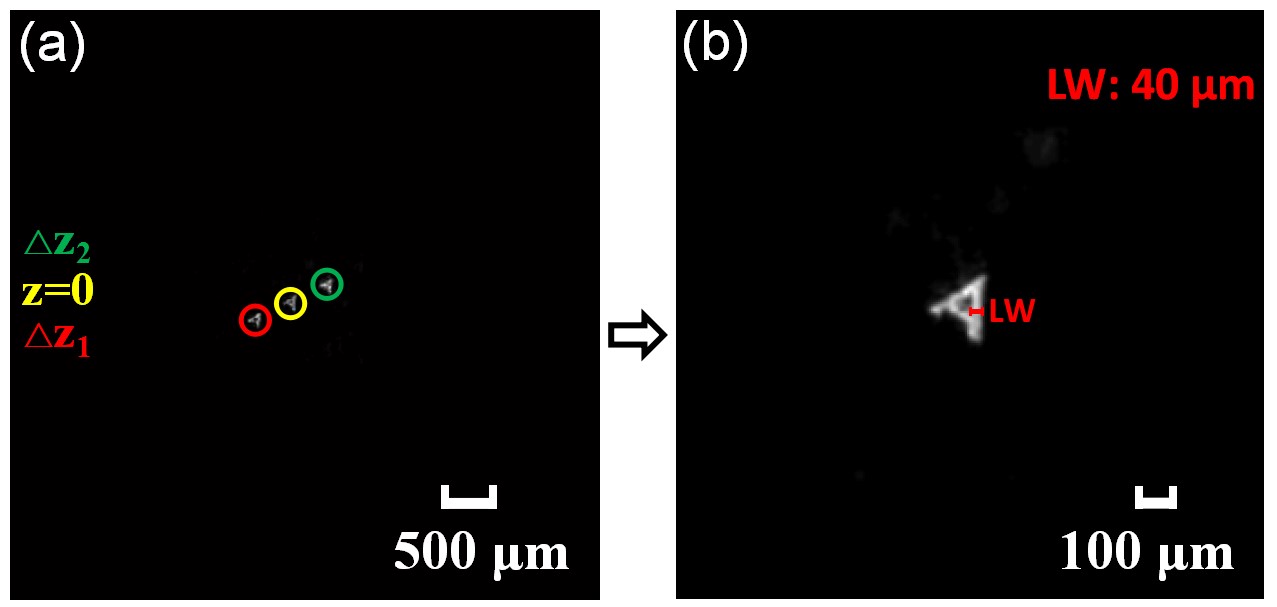Real-time and fast measurements in adaptive optics are becoming urgent in order to meet the real time requirement of high-power laser, astronomical observations and optical communication. Different from the Shack-Hartmann wave-front sensing, curvature sensing is used to obtain the test phase distribution by measuring the second derivative of the wave-front that satisfies the Poisson equation. In this case, the deformable mirrors in adaptive optics can be directly controlled by response matrix, which greatly reduce the feedback time and improve the real-time online.
Curvature sensing is used to solve the test wave-front by multi-planar defocus diffraction patterns. In order to realize single-shot measurement, there is at least biplanar diffraction patterns to be recorded simultaneously. Ancient Greek-ladder sieves proposed previously can realize three-dimensional array diffraction-limited foci and can further output multi-copies when they function as an filter in a telescope. In that case, the multi-planar diffraction patterns along the longitudinal direction can be recorded in one single exposure.
Recently, researchers at Shanghai Institute of Optics and Fine Mechanics, Chinese Academy of Sciences, have introduced the concept of tri-focal Fibonacci sieve into telescope and successfully realized tri-planar identical copies, which met the single-shot requirement of curvature sensing. The result was published in Applied Physics Letters.
In their experiment, they designed the amplitude-only tri-focal Fibonacci sieve and used them to image an amplitude-only object that was fabricated on a chrome plate. The Fibonacci sieve was placed at the focal plane in telescope to obtain three symmetrical defocus diffraction patterns, where the intermediate image functioned as a locator, just like the operation in the curvature sensing process. Finally, three copies that should be distributed along the longitudinal direction were mapped into the lateral direction and were recorded by a detector in one single exposure. Following this, they successfully reconstruct the phase distributions of the test object.
Naturally, for a tri-focal Fibonacci sieve, they demonstrated, when the intermediate focal plane is chosen as the reference plane in the recording process, the other two defocus planes would be symmetrical about the recording plane.
The experimental results agree well with the theoretical analysis and verify the validity of the proposed method of single-shot curvature sensing.
This work was supported by the National Natural Science Foundation of China and Youth Innovation Promotion Association of the Chinese Academy of Sciences.

Fig 1. Multi-planer imaging of Fibonacci sieve. (Image by SIOM) 
Fig 2. Experiment, (a) intensity recording and (b) reconstructed phase. . (Image by SIOM)
Article website: https://aip.scitation.org/doi/10.1063/1.5128426
Contact:
Mr. CAO Yong
General Administrative Office
Shanghai Institute of Optics and Fine Mechanics, CAS
Email: caoyong@siom.ac.cn